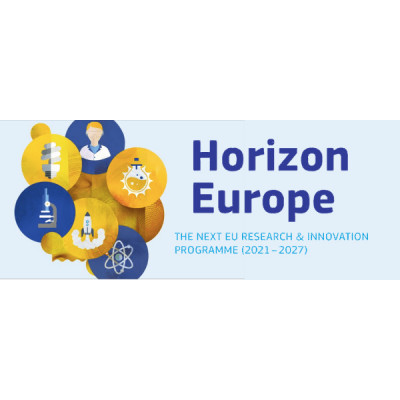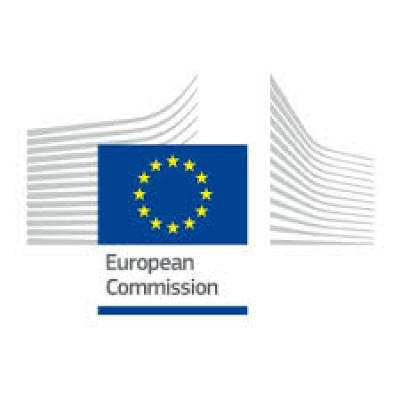
Quantum Photonic Integrated Circuit technologies (RIA)
Details
Description
Call Updates
Jul 31, 2023 3:02:32 PM
EVALUATION results
Published: 07/12/2022
Deadline: 29/03/2023
Available budget: EUR 129 000 000
The results of the evaluation are as follows:
Number of proposals submitted (including proposals transferred from or to other calls): 97
Number of inadmissible proposals: 0
Number of ineligible proposals: 1
Number of above-threshold proposals: 75
Total budget requested for above-threshold proposals: EUR 316,536,982.98
We recently informed the applicants about the evaluation results for their proposals.
For questions, please contact the Research Enquiry Service.
Mar 31, 2023 10:54:28 AM
Call HORIZON-CL4-2023-DIGITAL-EMERGING-01-CNECT has closed on the 29 March 2023.
97 proposals have been submitted.
The breakdown per topic is:
HORIZON-CL4-2023-DIGITAL-EMERGING-01-40: 9 proposals
Evaluation results are expected to be communicated in July 2023.
Jan 24, 2023 10:39:59 AM
We would like to draw your attention to an update of the “Detailed Budget Table” Excel template. A new template has been republished for your kind consideration and use.
An additional paragraph has been added to the instructions tab, explaining how to save the detailed budget table and how to upload it in the submission system:
“After you completed this Excel workbook, you must also complete the table ‘Budget for the proposal’ in Part A of the proposal, entering the requested EU contribution for each participant. Fill the Part A budget table using the total for each participant from the sheet ‘Lump sum breakdown’ in this Excel workbook. The format of this Excel workbook is .xlsm because it uses macros to generate sheets and make calculations automatically. Always save it as .xlsm. However, this format cannot be uploaded to the submission system for security reasons. Therefore, to submit the completed workbook, save a copy as an .xlsx or .xls document (and not as .xlsm) and upload it to the proposal submission tool at Step 5 of the submission process. Always keep a copy of the original .xlsm file. To save the workbook as .xlsx document, use the action button in the sheet “Instructions”. Alternatively, click on “File” and then “Save as”; in the “Save as” dialog box, choose “.xlsx” or “.xls” from the “Save as type” dropdown list.”
You can still use the template initially available in the submission system if you wish to, but please be aware of the instructions on how to upload and save the file.
Dec 8, 2022 11:28:13 AM
The submission session is now available for: HORIZON-CL4-2023-DIGITAL-EMERGING-01-40(HORIZON-RIA)
Quantum Photonic Integrated Circuit technologies (RIA)
TOPIC ID: HORIZON-CL4-2023-DIGITAL-EMERGING-01-40
Programme: Horizon Europe Framework Programme (HORIZON)
Call: Digital and emerging technologies for competitiveness and fit for the Green Deal (HORIZON-CL4-2023-DIGITAL-EMERGING-01-CNECT)
Type of action: HORIZON-RIA HORIZON Research and Innovation Actions
Type of MGA: HORIZON Lump Sum Grant [HORIZON-AG-LS]
Deadline model: single-stage
Opening date: 08 December 2022
Deadline date: 29 March 2023 17:00:00 Brussels time
ExpectedOutcome:
Photonic Integrated Circuits (PIC) technologies on one side and quantum science on the other are the building blocks for development of Quantum PIC (QPIC) devices for quantum information processing, computation/simulation, communication, sensing or metrology. Photon-based approaches can address the huge challenge of implementing quantum processes in public infrastructures, challenging industry applications and compact everyday-life devices and products.
QPIC technology has great potentials to target several application fields, in particular, but not limited to, health care, communications, environment and security, and thus has high strategic significance and major implications for the European economy.
However, to implement QPICs, research challenges have to be faced throughout the value chain, going from materials, circuit design (including the support of EDA tools), manufacturing processes and technological platforms, to the realization and validation of reliable and robust demonstrators and prototypes, and their integration and packaging. Furthermore, quantum systems are typically large, complex and costly, hindering their scalability, and thus cannot be directly used in products.
QPIC technology can address these issues, paving the way for compact, high performance, reliable, cost-effective components, that will enable quantum technology to be introduced in the market.
Expected Outcome:
To improve over existing PIC technologies in terms of performance, functionality, manufacturing process efficiency and reliability, integration, and packaging in a manner that facilitates scalable manufacturing.
To demonstrate the technology capability in key enabling Quantum PIC technologies with high potential impact on the quantum technology Industry, including applications in quantum sensing, communications, computation and simulation,
Preparing QPIC technologies for future Pilot Lines and Photonics hubs and open testing and experimentation facilities,
Exploit the potential of QPICs for a digital, green and healthy future in Europe by providing critical components and systems for next generation applications, products and processes. Develop tools for efficient design and prototyping of QPICs.
Secure Technological Sovereignty for Europe by maintaining leadership in QPICs
Contribution to the objectives of Digital Transformation, Green Deal, Competitiveness and Economic Growth.
Scope:
Proposals will address technology (up to TRL 4-5) in key enabling PIC technology applied to market needs. Objectives include:
Enhancement of PIC performance, e.g. ultra-low loss; ultra-low laser linewidth; ultra-high extinction ratio modulators and switches , extending spectral and optical power coverage, optical coupling interfaces, packaging.
Incorporation of specific quantum functionality into PIC platforms, e.g. single photon and entangled photon pair generation, single photon and photon number detection , quantum memory elements, quantum processors.
Multi-technology integration, e.g. incorporation of ion/atomic traps and relevant control electronics, superconducting detectors, nonlinear elements, integration of photonic readout into quantum computing and sensing devices employing other technologies (e.g. electronic, spintronic), relevant passive and active linear optical elements (e.g. modulators, shifters, switches etc.) to underscore a strategy for modular QPIC design.
Development of PICs capable of operating at cryogenic temperatures, with low power dissipation and performance optimized in the context of the operating environment.
Development of the most promising methods for QPIC fabrication in monolithic, hybrid or heterogeneous integration techniques for different functionalities together with an identification of the most advantageous platform materials, (e.g. derived from “classical” PIC technologies such as Si, SiO2, Si3N4, InP, LiNbO3, Si-on-insulator, LiNbO3-on-insulator, Al2O3, AlN, hybrid platforms, etc. etc. etc.).
Assembly and packaging of PICs, taking the specific challenges of quantum systems (environment, temperature, stability, visible and ultraviolet wavelengths requirements, vacuum integration) into account and including integration of complementary and ancillary technologies (e.g. microelectronics) where required
Miniaturization of previously non-scalable quantum photonic systems by implementing them in PIC form.
Proposals should identify applications in quantum sensing, communication, computation and simulation. Proposals should test and evaluate the developed Quantum PIC technologies in the context of such specific applications though trials at systems level in a representative laboratory or an operational environment.
These technologies should be developed in a manner to facilitate scalable manufacturing. Proposals should address IP management strategy and collaboration with European industry and SMEs, in particular in the context of establishing relevant European industrial manufacturing capabilities.
Collaboration with the Quantum Flagship initiative and the photonics partnership is crucial to be able to merge knowledge and experience in photonic technologies and quantum science.
In this topic, the integration of the gender dimension (sex and gender analysis) in research and innovation content is not a mandatory requirement.
Specific Topic Conditions:
Activities are expected to start at TRL 2-3 and achieve TRL 4-5 by the end of the project – see General Annex B.


